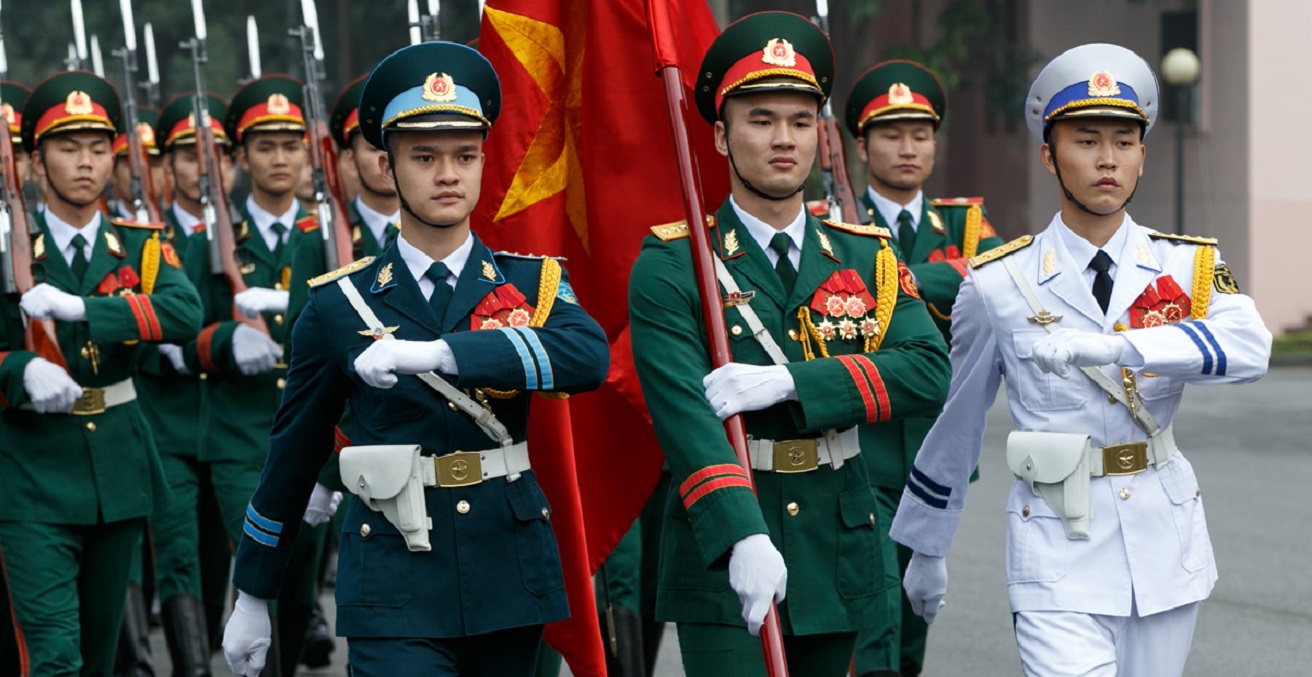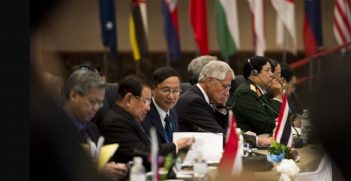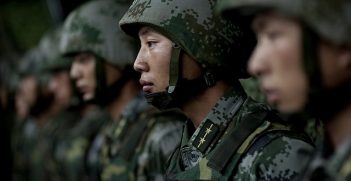Vietnam’s Pandemic Countermeasure: An Essential Element of Deterrence

Organisation and mobilisation are the key elements to Vietnam’s low-cost model of fighting the pandemic. These strategies are also used for Vietnam’s deterrence of its northern neighbour.
The number of confirmed cases of COVID-19 in Vietnam is just 372 (as of July 15), a low number for a country with a population of more than 97 million, long borders, and tight economic ties with China. Despite lacking a large public health system or strong financial capacity, Vietnam has used a different approach to effectively contain the virus. It has organised people at the grassroots level, mobilising workers to trace the contacts of confirmed cases, sanitise related locations, and enforce lockdowns. Corporations have also been called upon to produce test reagents, protection suits, masks, and other materials. Vietnam’s achievement of reaching a state where restrictions can now be relaxed shows strong social resilience and governance capable of handling emergency.
Importantly, these characteristics are also essential in defence. Defence and deterrence are essential for Vietnam’s ability to deal with strategic challenges it faces in the post-Cold War era. Vietnam’s northern neighbour has been rising again, putting heavy strategic pressure on Vietnam. Particularly regarding unsettled maritime borders, this could trigger future conflict. However, unlike the massive Soviet aid it received during the Cold War, Hanoi now has limited resources for defence. Therefore, Vietnamese defence planners have strategically concentrated on maritime defence, investing in aerial and naval capabilities. The most impressive of Vietnam’s maritime defence resources is the fleet of six Russian Project 636 submarines, which operate along with frigates, fighters, and other assets. In contrast, the Vietnamese land army has generally been neglected throughout Vietnam’s modernisation, with only a few projects such as 64 new T-90 tanks. The majority of Vietnam’s land force remains a legacy from the Cold War.
Hanoi’s maritime-centred defence is understandable given its settled land borders with Beijing, but all is not trouble-free on land. Countless cases in history have proven that settled land borders may not be enough to avoid wars, and the geographic location of Hanoi can leave it vulnerable. The distance between Hanoi and the Chinese border is only 130 kilometres, which means that various Chinese standoff weapons can easily reach Vietnam’s political centre. Vietnam’s relatively inferior, outdated artillery, armour, and other land capabilities, compared with newer Chinese technology, could undermine its defence. As deterrence is composed of capability, credibility, and communication, Vietnam’s deterrence could be undermined by its military inferiority. Beijing could choose to use force based on its perception of Hanoi’s defence as weak because it rests on obsolete military assets.
In the face of the strategic disadvantage, Vietnam’s multi-layered defence system is comprised of 410,000 regular army troops, 40,000 border forces, five million militia and self-defence forces, and, in addition, other forms of unconventional human power to create resistance on land. This system is the backbone of Vietnam’s deterrence against an invasion, before its land weaponry is modernised. With the well-known history of the Vietnam War, such a defence plan could seem formidable. But the war was more than four decades ago, and Vietnam’s land army is starting to lag behind.
Since the Doi Moi, the impacts of reform conducted by Vietnam since 1986 have been comprehensive, evidenced in the significant economic growth from liberalisation of the labour force and other elements of production. However, liberalisation of the market economy and related societal changes have more or less eroded governmental control over the population, a key capability needed for defence mobilisation. Whether Vietnam could appropriately mobilise people and resources had been uncertain – until the COVID-19 pandemic.
COVID-19 is a test to all countries worldwide that is different from any kind of military exercise. Vietnam’s countermeasures reflect the high extent of its capability for mobilisation and social resilience. Vietnamese officials are knowledgeable and capable of handling complicated issues associated with organising large numbers of people. Furthermore, the Vietnamese people are willing to cooperate with the official command, even at the cost of losing freedom and economic interests. Most Vietnamese people would have been trained in the use of light weapons during high school or their compulsory national service. In wartime, their knowledge and ability to follow orders would strengthen regular troop numbers in a situation where territorial defence was necessary. Furthermore, especially in complicated terrains such as jungles and urbanised areas, infantry are often the backbone of battle and the citizenry’s local knowledge is key.
In the present pandemic, so long as Vietnam can retain its current performance, its deterrence capabilities will also be naturally reinforced. As such, the strategic vulnerability of military obsolescence on land will be ameliorated by the organisation and mobilisation of people in the layered defence system. This system includes regular troops for conventional warfare, border forces, militia and self-defence forces to constrain the invader with conventional and/or guerrilla warfare. Of course, this does not mean that using force on land will be completely ruled out from Beijing’s options, as confrontation and small-scaled conflicts may still be considered to exert strategic pressure. However, a blitzkrieg to conquer Hanoi or other important location with superior firepower would be even less practical, after Vietnam’s recent demonstration of its ability to respond collectively in a crisis.
Shang-su Wu is a research fellow of the Regional Security Architecture Programme at the S. Rajaratnam School of International Studies (RSIS), Nanyang Technological University in Singapore.
This article is published under a Creative Commons License and can be republished with attribution.





